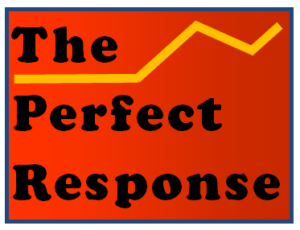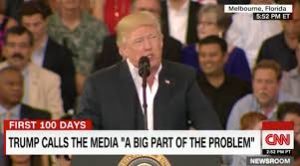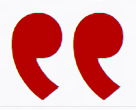Some clinical terms function as rhetorical shortcuts that are meant to be dismissive.
Language within a culture flows and changes like a river. One of the more interesting transformations over the relatively short period of the last 30 years has been a clear increase in the use of mental health labels in everyday discourse. What was once clinical language has become commonplace in ordinary conversation. We now use terms that once had a clear diagnostic function seen, among other places, in discussions of the President’s fitness for office. Writers from nearly every quarter wonder if he is “paranoid,” “driven by conspiracy theories,” “compulsive” in his use of Twitter, “delusional,” “manic,” “narcissistic” or a “sociopath.” Indeed, mental health experts suggest Trump really does fit the clinical definition of the last label. But I suspect that some of the other mental health terms have different rhetorical functions. We also see there terms even in ordinary settings. In my line of work as a professor even students who cut classes may well be described as a potentially suffering from a chronic mental health problems rather than bad judgment.
Clinical language has several interesting applications. One is to use a label that allows us to more or less dismiss another person for not meeting the general tenets of social competence. This heavy stigma is one reason that mental health labels used to be uttered in a whisper. The truth is that Trump easily offends our understandings of how an ordinary and empathetic person should relate. But its a more of a satisfying blow to weigh him down with language that flirts with the borderlands of the insane.
Using the lexicon of sanity makes it possible to offer a faux diagnosis that allows us to take a person less seriously.
![]()
Some of this is harmless and simply part of the constant flow of language. But the use of mental health terminology as a rhetorical device has another subtle consequence. Using the lexicon of sanity makes it possible to offer a faux diagnosis that allows us to take a person less seriously. In a nutshell, the language tends to deny the person the rights to full agency. Think of “agency” as the idea that we are fully in charge of our lives: capable of making of managing our own affairs. Illnesses of all sorts can be crushing blows to what we take to be our birthright of self-control. In some form or another an illness takes charge. This is why we give a person a pass if we hear about their debilitating headaches or hypertension. No moral judgment is made. Similarly, it would be cruel to fault a person for having a malignant tumor. Mental health terms can do much the same, but the pass is converted into a slight. The effect of using the lexicon is to devalue a person’s basic social capabilities: their capacities for acting within reasonable norms. Now, of course, many of us proudly proclaim our “attention deficits” and “compulsions.” But more of us are willing to accept them as excuses.
If we tell a friend we are “depressed,” they might find it easy to urge us to “snap out of it” or “cheer up.” But a person with clinical depression is not so easily advised. Their condition may be less in their immediate control. We often assume that a drug will do what they cannot do for themselves. This is mostly good. But the downside is the patient’s seeming loss of agency. We see them as not being able to help themselves.
All of this is a reminder that we naturally seek an advantage over those who fail to measure up. Rhetorical maneuvers involving clinical terms can foreclose the necessity to deal with a person and all of their complexities.
![]()

 Nothing stands out more in the rhetoric of Donald Trump than his apparent pleasure in pitting Americans against each other.
Nothing stands out more in the rhetoric of Donald Trump than his apparent pleasure in pitting Americans against each other. 